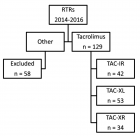Abstract
Research Article
Agricultural Residues for Future Energy Option in Sudan: An Analysis
Abdeen Mustafa Omer*
Published: 13 July, 2018 | Volume 2 - Issue 1 | Pages: 017-031
Like many tropical countries, Sudan has ample biomass resources that can be efficiently exploited in a manner that is both profitable and sustainable. Fuel-wood farming offers cost-effective and environmentally friendly energy solutions for Sudan, with the added benefit of providing sustainable livelihoods in rural areas. This article provides an overview of biomass energy activities and highlights future plans concerning optimum technical and economical utilization of biomass energy available in Sudan. Results suggest that biomass energy technologies must be encouraged, promoted, implemented, and fully demonstrated in Sudan.
Read Full Article HTML DOI: 10.29328/journal.aac.1001011 Cite this Article Read Full Article PDF
Keywords:
Biomass resources; Wastes; Woodfuel; Biofuels; Energy; Environment; Sustainable development; Surfactant sciences
References
- Galal MY. The Gezira Scheme-the greatest on the earth-under one management. Khartoum: Sudan. 1997.
- Robinson G. Changes in construction waste management. Waste Management World. 2007; 43-49.
- Abdeen MO. Development of integrated bioenergy for improvement of quality of life of poor people in developing countries. In F. L. Magnusson & O. W. Bengtsson (Eds.), Energy in Europe: Economics, policy and strategy. New York, NY: NOVA Science Publishers. 2009; 341-373.
- Omer AM. Green energies and environment. Renewable and Sustainable Energy Reviews. 2008; 12: 1789-1821.
- Duku B. Comprehensive review of biomass resources and biofuels potential in Ghana. Renewable and Sustainable Energy Review. 2009; 15: 404-415. Ref.: https://tinyurl.com/ybmnfds3
- Singh A, Sai Gu. Biomass conversion to energy in India: a critique. Renewable and Sustainable Energy Review. 2008; 14: 1367-1378. Ref.: https://tinyurl.com/ybvhmwbn
- Sims RH. Not too late: IPCC identifies renewable energy as a key measure to limit climate change. Renewable Energy World. 2007; 10: 31-39.
- Hood AH. Energy from nonwoody biomass in the Sudan. Energy Research Institute (ERI). Khartoum: Sudan. 1994.
- National Energy Administration (NEA). Renewable energy assessment for the Sudan. Khartoum: Sudan. 1982.
- National Energy Administration (NEA). A pre-investment study for fuel production from agricultural wastes for power generation and household consumption. Khartoum: Sudan. 1993.
- Omer AM. Renewable energy potential and future prospects in Sudan. Agriculture Development in Arab World. 1996; 3: 4-13.
- Omer AM. Sudan energy background; an overview. Renewable Energy. 1998; 14: 467-472. Ref.: https://tinyurl.com/yavmxlm9
- Energy Research Institute (ERI). Renewable energy resource potential in Sudan. Khartoum: Sudan. 1987.
- National Energy Administration (NEA). The national energy plan 1985-2000. Khartoum: Sudan. 1985.
- National Energy Administration (NEA). Energy Handbook. Khartoum: Sudan. 1991.
- Ali GE, Shommo SA. Sudan biomass energy issues and options. Energy Research Institute (ERI). Khartoum: Sudan. 1993.
- German Agency for Technical Cooperation (GTZ). Utilisation of biomass. Khartoum: Sudan. 1985.
- Omer AM. Renewable energy technology applications in the Sudan. In: Proceedings of the Third World Renewable Energy Congress. Reading: UK. 1994.
- Omer AM. Biogas technology and the environment. Regional Energy News. 1996; 2: 2-5.
- Ali GE, Huff CH. Canun El Duga, Improved charcoal stoves for the Sudan. Khartoum: Sudan. 1984.
- D’Apote SL. IEA biomass energy analysis and projections. In: Proceedings of Biomass Energy Conference: Data, analysis and Trends, 23-24 March, Paris: OECD. 1998.
- The World Bank. World development Report 2000/2001. Oxford: Oxford University Press. 2001.
- State of the world’s forest. Rome: FAO. 1999.
- National Forestry Administration (NFA). Forestry Handbook. Khartoum: Sudan. 1994.
- Haripriye G. Estimation of biomass in India forests. Biomass and Bioenergy. 2000; 19: 245-258. Ref.: https://tinyurl.com/ybxk9hwq
- Hall O, Scrase J. Will biomass be the environmentally friendly fuel of the future? Biomass and Bioenergy. 1998; 15: 357-367. Ref.: https://tinyurl.com/y88c6953
- World Bank. Sudan. 2010. https://tinyurl.com/32wtcqw
- Yongabi KA, Harris PL, Sambo AS, Agho MO. Managing cow dung with a cheap, low tech plastic digester. Proceedings of the 29 WEDC International Conference on Water and Environmental Sanitation co-organised by Water Engineering Development Centre of Loughborough University, UK, in conjunction with the Ministry of water resources, Abuja holding at Abuja. 2003; 486-489.
- Valery Agbor B, Nazim Cicek, Richard Sparling, Alex Berlin, David Levin B. Biomass pretreatment: Fundamentals toward application. Biotechnology Advances. 2011; 29: 675-685. Ref.: https://tinyurl.com/y8ckelv9
- Karolina Kucharska, Iwona Hołowacz, Donata Konopacka-Łyskawa, Piotr Rybarczyk, Marian Kamiński. Key issues in modeling and optimization of Lignocellulosic biomass fermentative conversion to gaseous biofuels. Renewable Energy. 2018; 129: 384-408. Ref.: https://tinyurl.com/y92vzs5m
- Ricardo SS Teixeira, Ayla S Silva, Rondinele O Moutta, Viridiana S Ferreira-Leitão, Rodrigo RO Barros, Maria Antonieta Ferrara, et al. Biomass pretreatment: a critical choice for biomass utilization via biotechnological routes. BMC Proc.2014; 8: O34. Ref.: https://tinyurl.com/y76d73pm
Figures:

Figure 1
Similar Articles
-
Agricultural Residues for Future Energy Option in Sudan: An AnalysisAbdeen Mustafa Omer*. Agricultural Residues for Future Energy Option in Sudan: An Analysis. . 2018 doi: 10.29328/journal.aac.1001011; 2: 017-031
-
A Gateway to Metal Resistance: Bacterial Response to Heavy Metal Toxicity in the Biological EnvironmentLoai Aljerf*,Nuha AlMasri. A Gateway to Metal Resistance: Bacterial Response to Heavy Metal Toxicity in the Biological Environment. . 2018 doi: 10.29328/journal.aac.1001012; 2: 032-044
-
Chromium Isotopes Detection in their Ores with Minimal ErrorsLoai Aljerf*,Nuha AlMasri. Chromium Isotopes Detection in their Ores with Minimal Errors. . 2018 doi: 10.29328/journal.aac.1001013; 2: 045-054
-
Micropollutants in wastewater irrigation systems: Impacts and perspectivesJimena Lázaro Gil*. Micropollutants in wastewater irrigation systems: Impacts and perspectives. . 2019 doi: 10.29328/journal.aac.1001019; 3: 011-013
-
Treatment of antibiotic-resistant bacteria by nanoparticles: Current approaches and prospectsTigabu Bekele*,Getachew Alamnie. Treatment of antibiotic-resistant bacteria by nanoparticles: Current approaches and prospects. . 2022 doi: 10.29328/journal.aac.1001025; 6: 001-009
-
High-Performance Liquid Chromatography (HPLC): A reviewAbdu Hussen Ali*. High-Performance Liquid Chromatography (HPLC): A review. . 2022 doi: 10.29328/journal.aac.1001026; 6: 010-020
-
High-Performance Liquid Chromatography (HPLC): A reviewAbdu Hussen Ali*. High-Performance Liquid Chromatography (HPLC): A review. . 2022 doi: 10.29328/journal.aac.1001026; 6: 010-020
-
Synthesis of citric acid using novel Aspergillus niveus obtained from agricultural wastesR Gnanasekaran#,A Petchiammal,BD Subhashree,M Anubha ,Yuvaraj Dinakarkumar*. Synthesis of citric acid using novel Aspergillus niveus obtained from agricultural wastes. . 2022 doi: 10.29328/journal.aac.1001032; 6: 051-055
-
Optimization of the fermentation process, characterization and antioxidant activity of exopolysaccharides produced from Azotobacter As101Paiziliya Paerhati,Ning Hui Xia,Niu Li Tao,Gao Yan Hua,Lu Chun Fang,Abulimiti Yili*. Optimization of the fermentation process, characterization and antioxidant activity of exopolysaccharides produced from Azotobacter As101. . 2022 doi: 10.29328/journal.aac.1001036; 6: 082-088
-
Eco-friendly microplastic removal through physical and chemical techniques: a reviewMohammad R Alrbaihat*,Qusay Abu-Afifeh. Eco-friendly microplastic removal through physical and chemical techniques: a review. . 2023 doi: 10.29328/journal.aac.1001038; 7: 014-024
Recently Viewed
-
Obesity in Patients with Chronic Obstructive Pulmonary Disease as a Separate Clinical PhenotypeDaria A Prokonich*, Tatiana V Saprina, Ekaterina B Bukreeva. Obesity in Patients with Chronic Obstructive Pulmonary Disease as a Separate Clinical Phenotype. J Pulmonol Respir Res. 2024: doi: 10.29328/journal.jprr.1001060; 8: 053-055
-
Current Practices for Severe Alpha-1 Antitrypsin Deficiency Associated COPD and EmphysemaMJ Nicholson*, M Seigo. Current Practices for Severe Alpha-1 Antitrypsin Deficiency Associated COPD and Emphysema. J Pulmonol Respir Res. 2024: doi: 10.29328/journal.jprr.1001058; 8: 044-047
-
Navigating Neurodegenerative Disorders: A Comprehensive Review of Current and Emerging Therapies for Neurodegenerative DisordersShashikant Kharat*, Sanjana Mali*, Gayatri Korade, Rakhi Gaykar. Navigating Neurodegenerative Disorders: A Comprehensive Review of Current and Emerging Therapies for Neurodegenerative Disorders. J Neurosci Neurol Disord. 2024: doi: 10.29328/journal.jnnd.1001095; 8: 033-046
-
Metastatic Brain Melanoma: A Rare Case with Review of LiteratureNeha Singh,Gaurav Raj,Akshay Kumar,Deepak Kumar Singh,Shivansh Dixit,Kaustubh Gupta*. Metastatic Brain Melanoma: A Rare Case with Review of Literature. J Radiol Oncol. 2025: doi: 10.29328/journal.jro.1001080; 9: 050-053
-
Validation of Prognostic Scores for Attempted Vaginal Delivery in Scar UterusMouiman Soukaina*,Mourran Oumaima,Etber Amina,Zeraidi Najia,Slaoui Aziz,Baydada Aziz. Validation of Prognostic Scores for Attempted Vaginal Delivery in Scar Uterus. Clin J Obstet Gynecol. 2025: doi: 10.29328/journal.cjog.1001185; 8: 023-029
Most Viewed
-
Evaluation of Biostimulants Based on Recovered Protein Hydrolysates from Animal By-products as Plant Growth EnhancersH Pérez-Aguilar*, M Lacruz-Asaro, F Arán-Ais. Evaluation of Biostimulants Based on Recovered Protein Hydrolysates from Animal By-products as Plant Growth Enhancers. J Plant Sci Phytopathol. 2023 doi: 10.29328/journal.jpsp.1001104; 7: 042-047
-
Sinonasal Myxoma Extending into the Orbit in a 4-Year Old: A Case PresentationJulian A Purrinos*, Ramzi Younis. Sinonasal Myxoma Extending into the Orbit in a 4-Year Old: A Case Presentation. Arch Case Rep. 2024 doi: 10.29328/journal.acr.1001099; 8: 075-077
-
Feasibility study of magnetic sensing for detecting single-neuron action potentialsDenis Tonini,Kai Wu,Renata Saha,Jian-Ping Wang*. Feasibility study of magnetic sensing for detecting single-neuron action potentials. Ann Biomed Sci Eng. 2022 doi: 10.29328/journal.abse.1001018; 6: 019-029
-
Pediatric Dysgerminoma: Unveiling a Rare Ovarian TumorFaten Limaiem*, Khalil Saffar, Ahmed Halouani. Pediatric Dysgerminoma: Unveiling a Rare Ovarian Tumor. Arch Case Rep. 2024 doi: 10.29328/journal.acr.1001087; 8: 010-013
-
Physical activity can change the physiological and psychological circumstances during COVID-19 pandemic: A narrative reviewKhashayar Maroufi*. Physical activity can change the physiological and psychological circumstances during COVID-19 pandemic: A narrative review. J Sports Med Ther. 2021 doi: 10.29328/journal.jsmt.1001051; 6: 001-007

HSPI: We're glad you're here. Please click "create a new Query" if you are a new visitor to our website and need further information from us.
If you are already a member of our network and need to keep track of any developments regarding a question you have already submitted, click "take me to my Query."


















































































































































